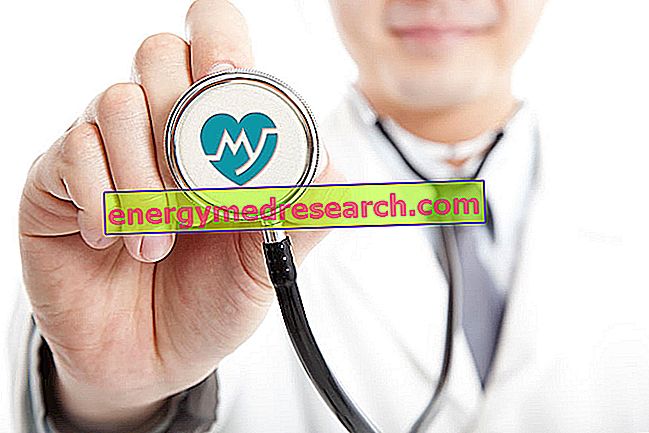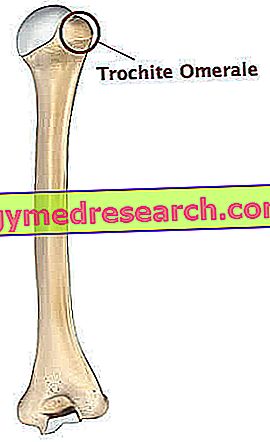Related articles: Heatstroke
Definition
Heat stroke is a form of hyperthermia; it occurs due to a dysfunction of the thermoregulation mechanisms, which leads to a considerable increase in central body temperature, associated with a systemic inflammatory response.
Heat stroke can be determined by the combination of increased production and reduced heat loss. Therefore, exposure to high ambient temperatures and / or intense physical effort can contribute to the disturbance. An altered dispersion of heat, on the other hand, can derive from obesity, from a high rate of humidity, from wearing heavy clothing (eg protective equipment for workers) and from any cause alters the formation of sweat or its evaporation.
Heat stroke occurs in 2 variants.
Heat stroke in the classic variant occurs within 2-3 days of the triggering event; it typically occurs during summer heat waves and mainly affects elderly people, very young children and sedentary or non self-sufficient subjects. Hypertensive people with chronic cardiovascular and respiratory diseases, neurological disorders, chronic renal failure and electrolyte balance disorders are also vulnerable.
Heat stroke from physical exercise, on the other hand, occurs quickly in healthy and active people after an intense effort without acclimatization. This causes a sudden and massive load of heat that the organism is not able to modulate.
Also the assumption of some drugs and certain pathologies (including systemic sclerosis, psoriasis and cystic fibrosis) can increase the risk of incurring heat stroke.
Most common symptoms and signs *
- Anorexia
- Asthenia
- Increased transaminases
- Convulsions
- Muscle cramps
- Dehydration
- Temporal and spatial disorientation
- Chest pain
- Erythema
- Temperature
- Hypoglycemia
- Hypotension
- lipotimia
- Headache
- myoclonus
- Nausea
- presyncope
- Rhabdomyolysis
- Intense thirst
- Drowsiness
- Confusional state
- Sweating
- Fainting
- Tachycardia
- tachypnoea
- Dizziness
- He retched
Further indications
The first symptoms of heat stroke include a sudden general malaise and a rapid rise in body temperature (> 40 ° C), followed by alterations in mental status (confusion, sense of fainting, lethargy, convulsions and loss of consciousness). Tachycardia and tachypnea are common; arterial pressure decreases suddenly.
Heat stroke is sometimes preceded by intense thirst, headaches, muscle cramps, feelings of nausea, loss of appetite, dizziness and weakness. In the classic heat stroke, the skin appears dry, red and hot, while in the exercise variant, the patient is usually sweaty.
Heat stroke is a medical emergency and, if not treated quickly, can lead to multi-organ dysfunctions, particularly in the muscles, liver, kidney, lung and heart. The condition can be complicated by rhabdomyolysis and acute renal failure; in addition, coagulopathy (disseminated intravascular coagulation), acute respiratory distress syndrome and permanent brain damage may occur.
The diagnosis of heat stroke is clinical: it is done by evaluating the body temperature and the results of laboratory tests, which include blood counts, PT (prothrombin time), electrolytes, azotemia, creatinine, calcium, creatine kinase (to detect any damage rhabdomyolysis), hepatic profile, urine test and diuresis monitoring. The onset of CNS disorders is particularly suggestive. When the problem is not obvious, other disorders that can cause impaired functioning of the central nervous system and hyperthermia must be taken into consideration, including: acute infections (sepsis, meningitis and toxic shock syndrome), drug intoxication, and thyrotoxic crisis stroke.
In the event of heat stroke, the timeliness with which the body is cooled is important; this can happen with the use of frozen towels, immersion in icy water and administration of cold saline solution intravenously. In the hospital, the treatment also includes the IV administration of fluids and supportive care in the event of organ failure.
To prevent heat stroke, it is important to protect yourself from the heat by wearing light clothing (cotton or linen), drinking at least two liters of water a day (even in the absence of thirst), avoid going out during the hottest hours and avoid exposure. prolonged in the sun.



